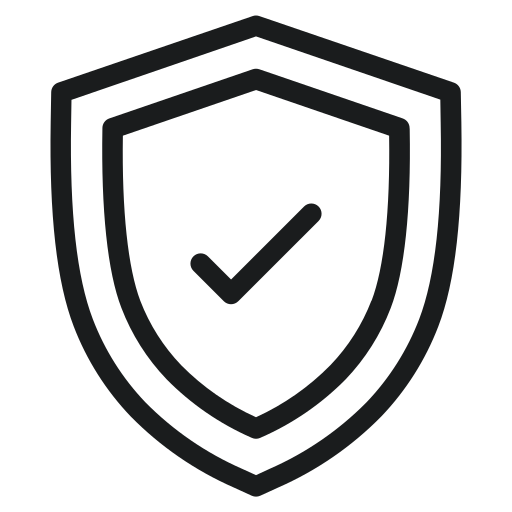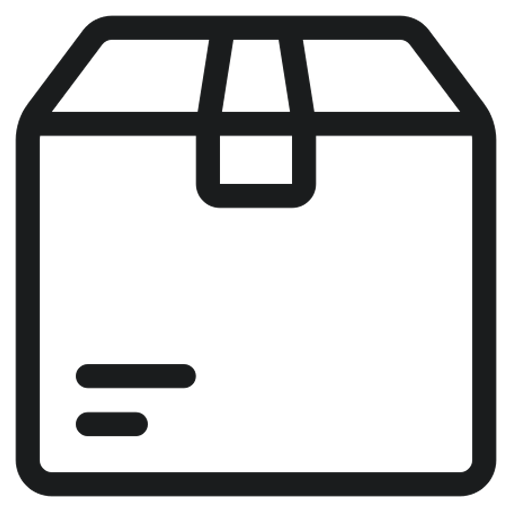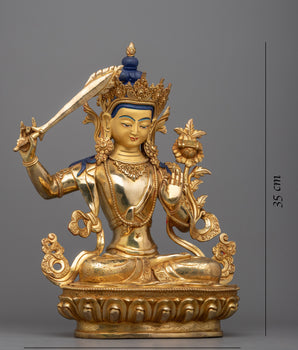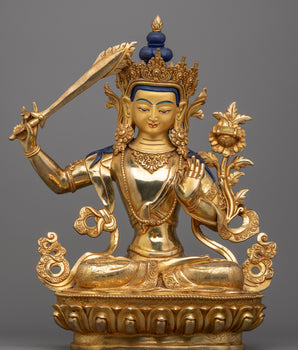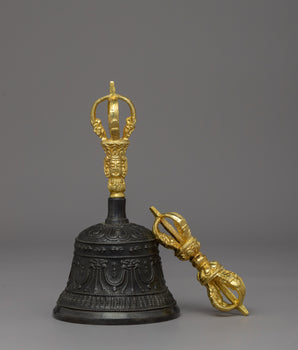A Symbol of Courage and Tradition Carved from the Heart of the Himalayas
The Khukuri, the standard inward curving knife of Nepal, is a powerful emblem of the self-esteem, culture, and nationhood of Nepal. Unlike the internationally recognized and renowned Japanese katana or the Scottish claymore, the khanjar is a product of the lofty Himalayan mountains and an integral part of the Nepalese people's life and culture of warfare. The form is quite special and clearly defined; it is bent forward to ensure it becomes effective as a chopper and a weapon. However, its cultural and symbolic significance extends far beyond its physical appearance. It serves as a convenient implement employed in villages and farms all over the country, a spiritual weapon that the fearsome Gurkha soldiers proudly wear. Over the years, the Khukuri has evolved into more than just a weapon; it is a history passed down through generations, symbolizing the strength and pride of Nepal.
Origin and Evolution of Khukuri

The Khukuri is a legendary weapon that originated in the ancient martial art tradition of the Nepalese hills and was refined throughout the centuries to become an unambiguous symbol of national identity. Historians postulate that the curved blade of the it may have been influenced by other curved weapons used in ancient Indian subcontinental warfare, such as kopis or machaira-style swords, in areas where Greek military design had an influence. However, it is a unique Nepalese development that has been influenced and shaped by the nation's geography, demands, and warrior culture in the Himalayas. The modern-day blade emerged in the hill communities of Nepal, among the blacksmiths (called Lohars), who have taught generations of blacksmiths how to make these blades.
The Khukuri emerged onto the international scene in the early 19th century, specifically during the Anglo-Nepalese War (1814-1816). The British encountered the Gurkhas, Nepalese warriors renowned for their fierce reputation and a remarkable battlefield record, thanks to their exceptional physical endurance, strategic acumen, and unwavering courage. The Gurkhas heroically fought alongside it and left a lasting impression on British forces. It has become synonymous with the Gurkha soldier and is a globally recognized symbol of loyalty, courage, and battlefield expertise. It gradually evolved into a multifaceted rural tool, a ritual object, and a source of national pride among the Nepalese people.
Anatomy of the Khukuri

Khukuri is much more than a curved knife. Every proportion of it is wrought with design:
1. Blade:
The blade measures 8-15 inches and bears a unique inward curving design that renders it highly effective in chopping. It has a balance that enables fineness and power.
2. Chakmak and Karda:
These are two small instruments that the Khukuri accompanies. Chakmak is used to sharpen the blade and make fire by sparks, and Karda is a small, general-purpose knife.
3. Notch (Kaudi):
This is a V-shaped or crescent-shaped notch located towards the handle, and it has both symbolic and practical applications. It would also keep the blood or sap (of the tree) from running out of the sword, and it is also religiously significant.
4. Handle:
The handle is traditionally crafted from wood or horn and features an ergonomic design. Ceremony Khukuris are usually adorned.
5. Sheath (Scabbard):
The scabbard is usually of wood covered with leather, and is of a protective and ornamental nature; in various instances, it is embellished with brass or silver.
Symbol of the Gurkhas

The Gurkhas are identified with their khukuri, which is a symbol of their valour, their discipline, and their spirit that nothing can break. It is one of the most famous military knives in the world, used by Gurkhas in the Nepalese, British, and Indian armies for over two hundred years.
Better to die than be a coward
The saying, “Better to die than be a coward”, is well associated with their code of honor and the Khukuri itself. The tradition dictates that once it has been pulled in a fight, it cannot be sheathed without spilling blood, which shows the gravity with which it is used. The Anglo-Nepalese War recognized the valour of the Gurkhas, and they subsequently proved it in other wars, including both World Wars. They deployed the Khukuri in Europe, Burma, and Italy without fear and received various Victoria Crosses and other high decorations. Nowadays, Gurkha regiments still use it as both ceremonial and fighting equipment, representing the connection to the past, pride, and tradition of the elite military forces.
Beyond the Battlefield: An Instrument of Everyday Life

The Khukuri has gained fame on the battlefield, but it has deep connections in the daily life of the Nepalese. It is more than a weapon to many rural communities spread throughout Nepal; it is also a means of survival and work. It features a distinctive, curved blade that makes it suitable for many homes, regardless of the region, whether in the hills or on the plains.
When in the hands of the farmers and villagers, the Khukuri is a multi-purpose tool- it is used to:
- Cutting wood and firewood
- Chopping through dense undergrowth.
- Slaughtering of animals and dissection of meat
- Gathering food or processing food
- Making and cutting wood tools
With its various purposes, a good Khukuri can be handed down through families, and a knife can become prized not just because of its utility but because of the people and incidents it has been a part of. The role also spills over to its ceremonial or cultural practices:
- On the occasions of weddings and during the major festivals, they are highly ornamented and presented as a sign of strength, honor, and tradition.
- It is ceremonially used in animal sacrifices during Dashain, the biggest and most sacred Hindu festival in Nepal, which symbolizes the triumph of good (Durga) over evil (Mahishasura). It is not an act of violence, but of ritual cleansing, and it is frequently a very reverent act.
- Applied in rites of passage in certain areas, like when the boys are initiated to become men, or in a military recruitment ceremony.
The khukuri, held by both the warrior and the farmer, is a symbol of self-reliance, dignity, and resilience.
Cultural Legacy of the Khukuri

(Photo from Backstreet)
The Khukuri, a traditional Nepalese weapon, has evolved into a symbol of Nepalese culture, representing the bravery of its people, their mastery, conventions, and self-image. It appears prominently in national and military symbolism, including that of Gurkha regiments in the British, Indian, and Nepalese armies. It also seems in cultural dance and drama, particularly in festivals like Dashain, where it serves as a symbol of victory over evil. The fascinating aspect of the Khukuri is the hand-blade manufacturing business, which has been passed down through generations of Lohars. In every forging, a mix of technique and cultural knowledge is put in, thus each one is a work of art in itself.
Various parts of Nepal have given rise to different styles of it, all designed to meet the local demands and requirements:
1. Bhojpuri Khukuri: It is a heavy and severely curved blade, which is ideal due to its cuts and ceremonial purpose.
2. Dharane Khukuri: A little bit shorter and lighter, well balanced and easy to use- used by many serving soldiers.
3. Salyani Khukuri: Wide and heavy, used in most rituals and hard work.
Khukuris were used as the emblems probably dates from the last years of the reign of King Prithvi Bir Bikram Shah Dev (1881-1911) and are sold to foreigners as souvenirs or collectors' items, with the most valued ones being the authentic handmade ones with famous origin places such as Dharan, Bhojpur, and Salyan. It depicts the culture of Nepal along with its strength, courage, and craftsmanship, and is applied in different places.
Modern Revival and International Appeal
The Khukuri has enjoyed a Revival in recent years, garnering both national and international interest, as it is not only a military or agricultural implement, but also a collectible, a heritage accessory, and a utility knife for survivalists and outdoorspeople in communities across the globe. Due to the popularity of traditional craftsmanship and hand-forged knives in general, the conventional variety produced by Nepalese smiths has gained popularity among collectors, martial artists, and bushcrafters worldwide.
NGOs and cultural organizations in Nepal are also working to preserve the heritage of Khukuri-making by educating young blacksmiths and promoting ethical manufacturing practices. The internet and social media have also significantly contributed to the demonstration of the internet's versatility and legacy, thereby enhancing its ability to find new utility in a globalized society while remaining grounded in its cultural birthplace.
Conclusion
The khukuri is more than just a weapon; it is an eternal symbol of Nepalese culture, identity, and power. It has been tested in the far-flung Himalayan villages as well as on the world's battlefields and is both practical and culturally relevant, carrying symbolic significance. It embodies the brave nature of the Gurkhas, the artistry of Nepal blacksmiths, and the lifestyle and culture of innumerable Nepali villages. The Khukuri passes through generations and geographical boundaries as a survival weapon, a ritual object, and as a Family treasure. It continues to evolve even today, as it acquires international attention and appreciation, thereby bringing with it the pride, history, and spirit of Nepal. Each bend in its blade is a tale of manliness, race, and unbroken connection with a superb and colorful past.



